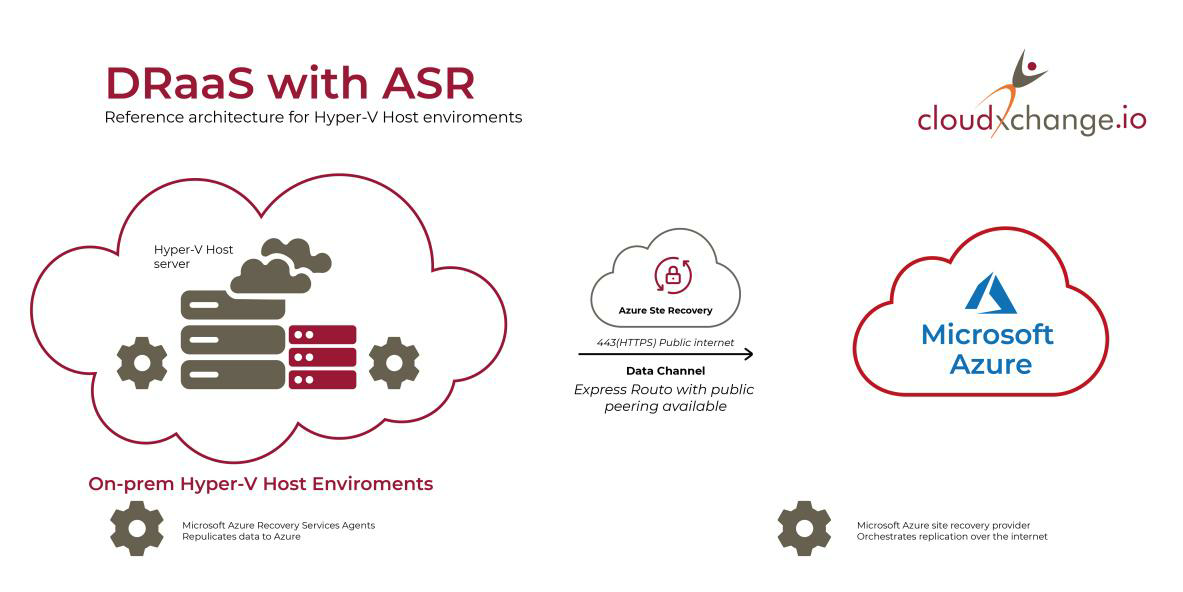Your Data is precious.
Disasters can happen anywhere, at any time. Whether it’s a traditional physical environment or the virtual world, disasters can occur when least expected. Organizations frequently face IT disasters both big and small. Power failures, cyberattacks, human error strikes are some of the commonly occurring IT disasters. Such unforeseen situations could cost organizations a lot of money and data loss thus affecting their business growth. Almost every organization knows that recovery from disaster is survival for their business. But the regular data backups are not sufficient to keep the systems up and running.
Managed Disaster Recovery-as-a-Service, a sought-after solution
Disaster Recovery (DR) has evolved over the years. It is now more focused on avoiding outages instead of just planning how to recover from an outage. With this evolution organizations too see the need to evolve and re-evaluate their plans. The best part of a virtual environment is the number of options available for disaster recovery and implementations. And considering managed services for disaster recovery may be one of the best options for organizations today. Let’s read on to find out how.
Is Disaster Recovery as a Service (DRaaS) for me?
Is your business safe from a disaster? Is your current disaster recovery strategy satisfactory enough to address your business-specific challenges? If there a slight chance that your business is vulnerable, then yes DRaaS is for you. Here, by Disaster Recovery, we are referring to the ability of your organization to avoid disaster occurrences, and the ability to recuperate and restore the IT infrastructure in case of disasters, thereby reducing the amount of time and cost involved.
Right DRaaS provider, always a good starting point
Most often it is observed that it is difficult and time-consuming for organizations to carry out regular testing of DR plans and configurations on their own. IT teams are usually already overburdened with tasks of monitoring and upgrading infrastructure. Hence, organizations prefer DRaaS Managed Service Providers who facilitate advanced data replication solutions and services for DR and business continuity.
Thus choosing the right DRaaS cloud service provider is important and depends on the DR needs of an organization. DRaaS providers mainly deliver the resources to ensure the protection of your critical virtual and physical IT workloads. These DRaaS services usually range from Self-Service (for those who want a target for their replication) to Assisted (for those who need little support in setting up their environment, up to Fully-Managed DRaaS (for organizations that require end-to-end assistance and want to offload the task of daily oversight and management).
Benefits you get with Managed DRaaS

How Azure Site Recovery Replication and DR helps
Advanced data replication solutions provided by cloudxchange.io ‘s Managed DRaaS provide the disaster recovery and business continuity coverage that safeguards your business. Our Managed DRaaS services offer multiple means for Tier 1 and Tier 2 application and infrastructure coverage. Azure Site Recovery is used to migrate and replicate data to Microsoft Azure, from any on-premises environment – VMware, Hyper-V, bare-metal environments, and also other Azure regions. Below are the reference architectures for different environments.


Benefits of Azure Site Recovery:
- Azure’s flagship migration/BCDR tool
- Allows you to replicate from multiple environments like (VMware, Hyper-V, physical bare-metal, and Azure)
- Supports replication from Hyper-V and vSphere environments
- Ensures readiness by executing tests when workloads are being replicated into Azure
- Near-zero downtime during failover of applications
- Has minimal impact to production users during failover of a single application or an entire datacentre to the cloud
Why cloudxchange.io as a Managed Service Provider?
As a Multi Managed Cloud Service Provider, cloudxchange.io provides services that enable organizations to implement a data protection and replication program, i.e., full disaster recovery as a service (DraaS) program that supports business continuity and also addresses the business and compliance requirements. We know that regular data backups are not enough to take care of your IT infrastructure during any kind of disaster. This is where we need expert services of managed cloud service providers who can fully manage and provide the best data replication solutions and services for disaster recovery and business continuity but also ensure to protect your critical virtual and physical IT infrastructure. Our experts work with you to understand the security and compliance needs, and complexities of your complete infrastructure and application environment, and create a disaster recovery plan best suited to address the business challenges that are unique to your organization.
With growing disasters and unpredictable events, its time organizations safeguard their essential applications and infrastructure. Keeping disasters away lets you focus on your business. Engage a Managed DRaaS provider to help build a DR plan that confirms maximum coverage for your key business applications.




